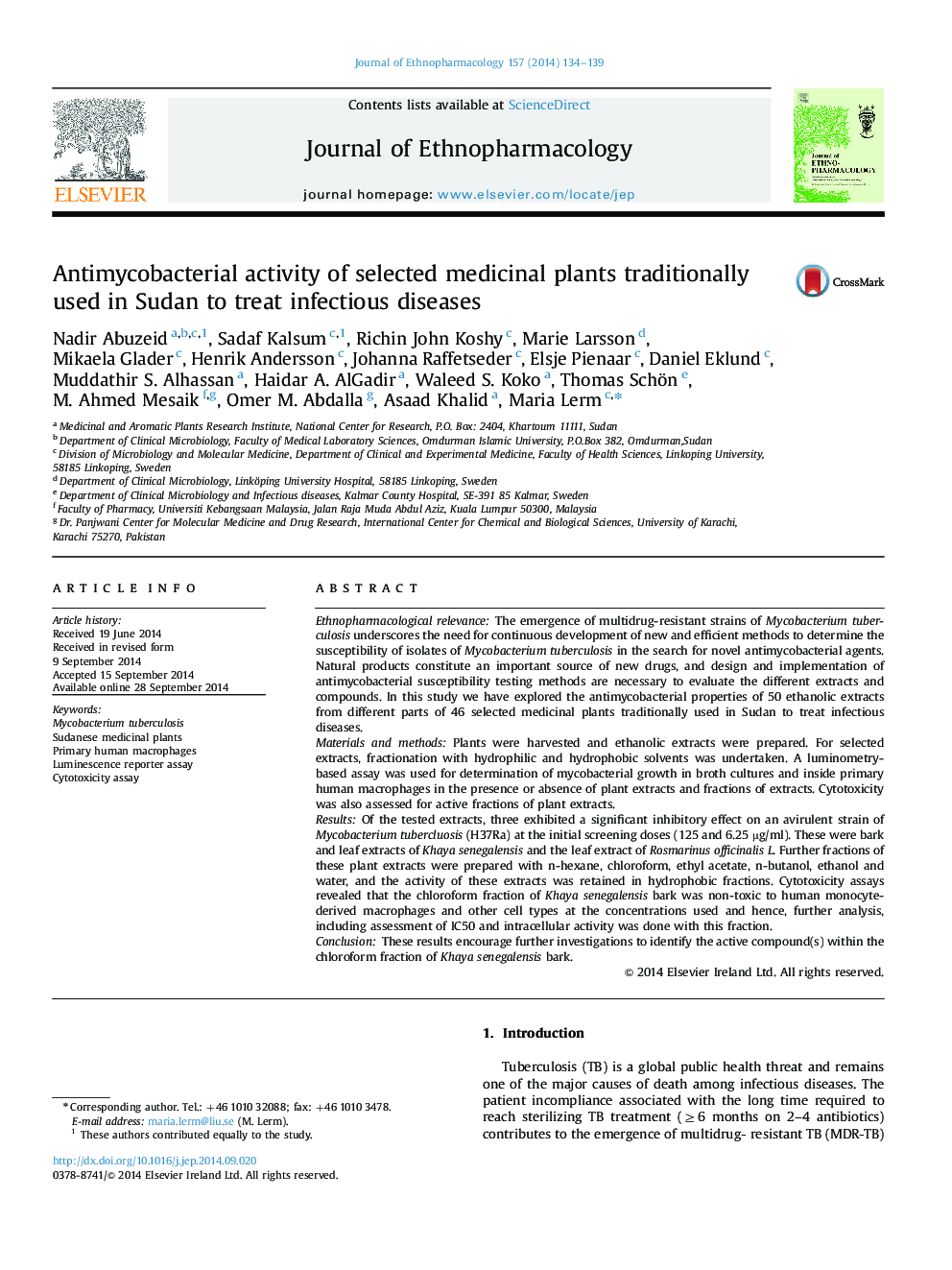| کد مقاله | کد نشریه | سال انتشار | مقاله انگلیسی | نسخه تمام متن |
|---|---|---|---|---|
| 5836203 | 1560404 | 2014 | 6 صفحه PDF | دانلود رایگان |
Ethnopharmacological relevanceThe emergence of multidrug-resistant strains of Mycobacterium tuberculosis underscores the need for continuous development of new and efficient methods to determine the susceptibility of isolates of Mycobacterium tuberculosis in the search for novel antimycobacterial agents. Natural products constitute an important source of new drugs, and design and implementation of antimycobacterial susceptibility testing methods are necessary to evaluate the different extracts and compounds. In this study we have explored the antimycobacterial properties of 50 ethanolic extracts from different parts of 46 selected medicinal plants traditionally used in Sudan to treat infectious diseases.Materials and methodsPlants were harvested and ethanolic extracts were prepared. For selected extracts, fractionation with hydrophilic and hydrophobic solvents was undertaken. A luminometry-based assay was used for determination of mycobacterial growth in broth cultures and inside primary human macrophages in the presence or absence of plant extracts and fractions of extracts. Cytotoxicity was also assessed for active fractions of plant extracts.ResultsOf the tested extracts, three exhibited a significant inhibitory effect on an avirulent strain of Mycobacterium tubercluosis (H37Ra) at the initial screening doses (125 and 6.25 µg/ml). These were bark and leaf extracts of Khaya senegalensis and the leaf extract of Rosmarinus officinalis L. Further fractions of these plant extracts were prepared with n-hexane, chloroform, ethyl acetate, n-butanol, ethanol and water, and the activity of these extracts was retained in hydrophobic fractions. Cytotoxicity assays revealed that the chloroform fraction of Khaya senegalensis bark was non-toxic to human monocyte-derived macrophages and other cell types at the concentrations used and hence, further analysis, including assessment of IC50 and intracellular activity was done with this fraction.ConclusionThese results encourage further investigations to identify the active compound(s) within the chloroform fraction of Khaya senegalensis bark.
161
Journal: Journal of Ethnopharmacology - Volume 157, 18 November 2014, Pages 134-139
